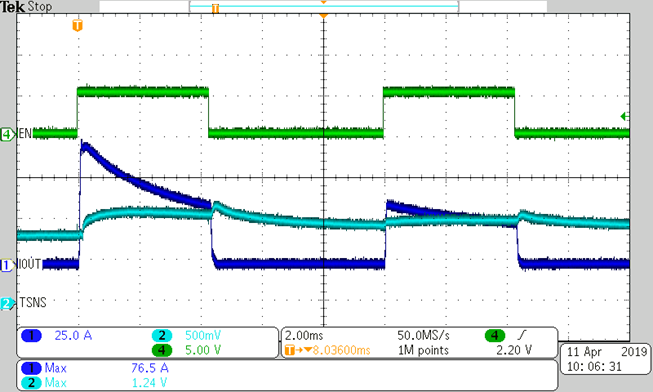SLVAEX0 October 2020 TPS1H000-Q1 , TPS1H100-Q1 , TPS1H200A-Q1 , TPS1HA08-Q1 , TPS1HB16-Q1 , TPS1HB50-Q1 , TPS2HB16-Q1 , TPS2HB50-Q1 , TPS4H000-Q1 , TPS4H160-Q1
2.3 Device Temperature on the Sense (SNS) Pin
The SNS pin on some devices can be configured to output the device temperature in a way that will be more accurate than measuring the device temperature externally. As the high side switch heats up due to power dissipation, a transient signal that is pulsed can be correlated with a corresponding junction-to-ambient thermal resistance RθJA that can be further used to calculate the junction temperature. As measuring the current on the CS pin becomes more accurate at higher load currents within the current rating, similarly, this transient signal becomes more reliable over time but is limited by the sampling rate of the SNS pin. The SNS pin . As it becomes reliable, it can be read to determine whether the device is close to thermal shutdown and used to correlate an increase or decrease in temperature. An example of using the SNS pin for temperature of the device is shown in Figure 2-1, which indicates that the temperature is rising within the device as when current is flowing through the device and falling when the device is disabled.
 Figure 2-1 SNS Pin Waveform Showing Increasing and
Decreasing Temperature Over Time
Figure 2-1 SNS Pin Waveform Showing Increasing and
Decreasing Temperature Over TimeTo ensure accurate sensing measurement, the sensing resistor should be connected to the same ground potential as the ADC that is used. The tolerance of the sensing resistor will keep this method of measuring the device’s temperature more reliable and capable than measuring through external means.